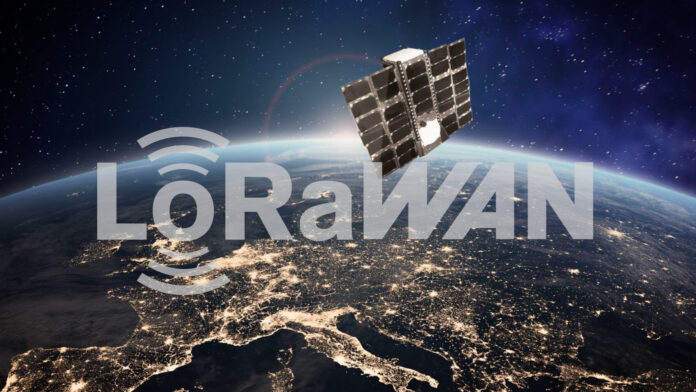Europe has approved a unified framework for non-cellular satellite IoT in the 862–870MHz band – a big win for LoRaWAN after years of patchwork regulation. Twenty two regulators have already confirmed the change; Middle East regulators are ready to “copy and paste”.
In sum – what to know:
Legal clarity – CEPT greenlights European regulators to authorize low-power IoT comms with satellites; 22 regulators in the region have already confirmed the change.
Hard work – LoRa Alliance calls it a “validating” step to enable growth for satellite LoRaWAN services, which will simplify the mission of satellite SRD stalwarts like Lacuna.
Wide impact – new framework applies to all non-cellular IoT services in the unlicensed 862–870MHz band, and will help S-band providers like EchoStar to broaden their offer.
It is not just the cellular IoT crowd crowing about hooking-up remote sensor devices to satellites, of course, and the European Conference of Postal and Telecommunications Administrations (CEPT) has just approved an important framework to standardise usage of the non-cellular 862-870MHz band for satellite IoT in Europe. The LoRaWAN ecosystem, which uses the band in Europe, and has been connecting low-power IoT devices to satellites via a patchwork of temporary or conditional regulatory arrangements for years, has hailed the move. The LoRa Alliance, the association of companies backing the standard, said it “unlocks new opportunities”.
The Electronic Communications Committee (ECC) at CEPT finalized the framework in June. It means local European regulators can now green-light direct low-power device comms with satellites (LPD-S, as it is classified) in the 862-870MHz ‘short-range device’ (SRD, as it is termed) band in their jurisdictions. It should clear existing satellite LoRaWAN services, most notably from Lacuna Space and Plan-S, to build scale across the region – hitherto “very time consuming”, beyond EU countries that had authorised SRD satellites such as Germany and Turkey. It should also help the likes of EchoStar Mobile, mostly offering satellite LoRaWAN in the licensed 2.0–2.2 GHz S-band, but with hybrid terrestrial dabblings in Europe at 862-870MHz, as well.
So far, 22 European countries have implemented the European decision at national level. Following the CEPT decision in June, the LoRa Alliance has received “questions” from regulators in the Middle East about “details to implement a similar decision outside Europe”. A spokesperson stated: “The characteristics of the decision could be copied and pasted very easily in other parts of the ITU-R Region 1.” (The last reference, here, is to the first of three global radio regions defined by the ITU radio-communication sector to manage spectrum use and frequency allocations; it covers Europe, Africa, the Middle East, Russia, Central Asia, and parts of the Arctic.)
The spokesperson added: “The framework really clarifies key technical parameters such as power flux density (PFD; a measure of power received per unit area) that should be implemented at the European level to protect incumbent terrestrial SRD [services] in 862-870MHz and mobile networks in the adjacent bands. It brings certainty to satellite operators that one solution fits all in Europe and to regulators for harmonisation of technical parameters and security (against spying, for example) for satellite operators that are listed in the European decision.”
The new CEPT framework covers other low-power wide-area (LPWA) IoT network technologies using the SRD band as well, it might be noted – such as Sigfox. But really, the outcome is a triumph for the LoRaWAN brigade, which has been variously offering non-terrestrial network (NTN; satellite) services since 2020, at least – even as the big mobile operators have sucked up most of the oxygen in the space, pushing cellular NTN standards for NB-IoT, LTE-M, and the rest. Indeed, the LoRa Alliance has been in a “years-long collaboration” with European regulators about harmonizing the 862-870MHz band in Europe for satellite IoT.
(Note: LoRaWAN uses the unlicensed 902-928 MHz band in the US, and also the unlicensed 2.4 GHz band globally; the latter is suited for global tracking across regions with a single configuration, and is less-commonly used.) The alliance, which made satellite-NTN connectivity central to its 2027 roadmap, introduced a technical specification a couple of years back for long-range frequency-hopping spread spectrum (LR-FHSS) to enable direct-to-satellite comms in unlicensed spectrum. It said satellite-based LoRaWAN will drive IoT sales to monitor and track assets in remote environments in various industries – “regardless of geographic location or terrestrial infrastructure”.
It cited logistics, agriculture, environmental monitoring, and remote asset management. Alper Yegin, chief executive at the LoRa Alliance, said: “Advocating for LoRaWAN technology and spectrum access is one of the Alliance’s main objectives. Maintaining open and available frequency bands is key to our members’ ability to build businesses based on the open LoRaWAN wide area networking standard. It is validating to have a formal regulatory framework in place to guide future deployments. We extend our thanks to our members who have tirelessly advocated to secure this formal regulatory framework, ensuring broad access for satellite IoT solutions.”
Chris Seifert, chair at the ECC, said: “This is a crucial step toward fostering innovation in the growing IoT sector. By enabling LPD-S devices to communicate with satellites within harmonized SRD spectrum, we unlock new possibilities for a wide range of technologies for reliable, low-power connectivity – even in remote or underserved regions.”
EchoStar Mobile is arguably the biggest name in satellite LoRaWAN. It has deals with LoRaWAN solution providers API-K, Cyric IoT, DalesLandNet, Dryad Networks, Galaxy1, ProEsys, and Symes in Europe. It also has a major tie-up with Switzerland-based mobile operator Swisscom, which ropes in French IoT stalwart Actility for the terrestrial LoRaWAN setup. As well, it is supplying UK-based Wyld Networks, which has LoRaWAN-based IoT work with Bayer, Chevron, Treevia, Agrology, KWS, Agrocognitive, and Wezen Group.
The LoRa Alliance will host a webinar on satellite IoT on September 11.

